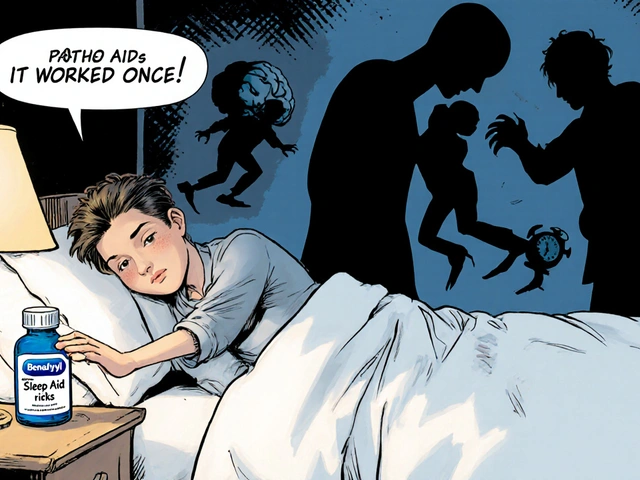If you or someone you love has been told there is a tumour in or around the eye, your first question is simple: can we treat it without losing vision or the eye? The short answer in 2025 is encouraging. Surgeons now pair precise microsurgery with targeted radiation, endoscopic approaches, and smarter planning tools. That means higher rates of eye-sparing treatment and better control of tumours that used to need radical surgery. This guide lays out what is genuinely new, where it helps, and how to decide with your team.
TL;DR: the breakthroughs changing treatment right now
Here is the quick version for busy readers who need a clear, honest snapshot. If you want the full story with examples and checklists, keep scrolling.
- Eye-sparing is the default for many tumours. For uveal (choroidal) melanoma, plaque brachytherapy and proton beam now achieve local control around 85-95% in suitable cases, with survival similar to removing the eye (based on the COMS landmark data and subsequent audits).
- Retinoblastoma care has been transformed by intra-arterial and intravitreal chemotherapy, pushing globe-salvage into the 70-90% range for many advanced eyes, while reducing systemic toxicity (multi-centre outcomes from 2019-2024).
- Margins are safer. For eyelid and conjunctival cancers, margin-controlled excision (including Mohs for eyelid skin tumours) and sentinel node biopsy catch spread earlier and cut re‑operation rates.
- Less invasive routes. Endoscopic endonasal and orbit-sparing approaches remove select orbital tumours through the nose or small incisions, reducing scarring and recovery time.
- Smarter planning. Intraoperative OCT, ultrasound biomicroscopy, 3D planning for plaques, and early-stage robotics mean more precise targeting and fewer collateral hits to healthy retina.
If you only remember one thing: the aim in 2025 is to control the tumour while preserving as much seeing tissue as possible. That is what modern eye cancer surgery is designed to do.
What is new in 2025 and how it helps
Different eye cancers behave differently, so the innovations vary. Here is what is actually new or now mainstream, mapped to the most common tumours.
Uveal (choroidal and ciliary body) melanoma
- Episcleral plaque brachytherapy 2.0: Still the workhorse for small-to-medium tumours. The update is in planning: microscope-integrated imaging, stereotactic guidance, and software that optimises plaque size, seed loading, and position to cover the tumour while sparing macula and optic nerve. Several centres are piloting customised, 3D-printed plaque carriers for irregular shapes.
- Proton beam therapy (PBT): Pencil-beam scanning and better immobilisation have tightened dose fall-off, especially helpful for tumours near critical structures. In England, ocular PBT is coordinated with specialist eye units; tantalum markers on the sclera allow millimetre precision during treatment at a proton centre. Local control for suitable lesions is high, with fewer late complications compared with some photon techniques when the macula or nerve is close.
- Endoresection/exoresection for select cases: For posterior tumours that respond poorly to radiation or threaten to cause toxic tumour syndrome, experienced centres offer surgical removal through scleral or vitreoretinal routes. Today this is paired with adjunctive radiotherapy and adjuvants to curb recurrence. It is not for every tumour but can preserve anatomy and, sometimes, usable vision.
- Imaging-led margins: Intraoperative OCT and ultrasound biomicroscopy help define tumour edges, plaque-to-tumour distance, and ciliary body involvement in real time, reducing guesswork.
Retinoblastoma
- Intra-arterial chemotherapy (IAC): A microcatheter threads from the groin to the ophthalmic artery to deliver melphalan, topotecan, or carboplatin directly to the eye. Multiple recent cohorts show globe salvage commonly in the 70-90% band for advanced group D eyes, with lower systemic side effects than traditional IV chemo. Rare but serious risks include vascular spasm or stroke, so it must be done in a specialised centre.
- Intravitreal chemotherapy: For stubborn vitreous seeds, micro-doses of melphalan or topotecan injected into the eye, with careful reflux prevention and cryotherapy at the needle site, have pushed control rates up dramatically. This has cut the need for enucleation in challenging eyes.
- Laser and cryo as precision add-ons: Modern diode laser and cryotherapy finish off residual foci with fewer collateral hits. Imaging guides the dose.
Eyelid and conjunctival tumours (basal cell, squamous, sebaceous, melanoma)
- Mohs micrographic surgery for eyelid skin cancers: Real-time margin control spares eyelid tissue while achieving high cure rates for basal and squamous cell carcinomas. Oculoplastic reconstruction techniques now restore eyelid function and appearance with fewer staged procedures.
- Conjunctival melanoma and OSSN (ocular surface squamous neoplasia): The modern combination is a no-touch wide excision, double freeze-thaw cryotherapy to the margins, and topical agents (mitomycin C, 5‑FU, or interferon) as adjuvant therapy. Select centres use intraoperative confocal or frozen section analysis to reduce positive margins. Sentinel lymph node biopsy is more common in higher-risk cases to catch micro-metastases earlier.
Orbital tumours
- Endoscopic endonasal access: For medial orbital lesions and selected apex tumours, surgeons now reach the tumour through the nasal cavity with neurosurgical navigation. Less visible scarring, often shorter stays, and fewer dry-eye issues compared with large external approaches.
- Navigation and 3D planning: Preoperative CT/MRI merged with surgical navigation lowers the risk of damaging optic nerve or extraocular muscles, especially in re-operations.
Across the board: planning and precision
- Genomic and risk stratification: For uveal melanoma, gene expression profiling and chromosomal testing (e.g., monosomy 3) do not change the local surgery, but they personalise surveillance for metastasis and guide systemic therapy if needed. That changes follow-up intensity and when to involve oncology.
- Robotics (early days): Robotic-assist platforms developed for retinal micro-surgery are being explored for steady, tremor-free tasks such as subretinal delivery or precise plaque placement. These are early-stage and only in trials, but the direction is clear: finer control, less collateral damage.
Evidence that underpins these claims comes from long-running trials like the Collaborative Ocular Melanoma Study for survival equivalence of enucleation vs plaque, national audits from major eye hospitals in the UK and Europe showing contemporary local control and complication rates, and multi-centre retinoblastoma outcomes from 2019-2024 showing the rise of intra-arterial and intravitreal chemotherapy. Guideline updates from the Royal College of Ophthalmologists and leading centres have folded these into standard pathways.
From first consult to recovery: how modern care actually unfolds
Here is the practical, step-by-step path most patients follow. It varies by tumour type and centre, but the beats are similar.
- Specialist diagnosis: You will see an ocular oncologist or oculoplastic/orbital surgeon. Imaging could include fundus photography, widefield OCT, B-scan ultrasound, ultrasound biomicroscopy (for ciliary body), fluorescein angiography, and MRI/CT for orbital disease. For eyelid or conjunctival lesions, you will likely have a biopsy.
- Multidisciplinary planning: Your case is reviewed with radiology, radiation oncology, paediatric oncology (for retinoblastoma), and genetics if relevant. The plan balances tumour control, vision, and risks to structures that matter for your daily life (macula, optic nerve, tear film).
- Informed choice: You will be walked through options: eye-sparing radiotherapy or surgery vs removal of the eye; cosmetic and functional outcomes; risk of recurrence; need for additional treatments; and follow-up intensity. Ask for absolute numbers: local control, eye-sparing, and complication rates for your specific tumour size and location in that centre.
- Pre-op tests and marking: For plaques, small metal markers (tantalum) may be sutured to the sclera to guide proton beam targeting. For retinoblastoma, staging exams may be under anaesthesia. For orbital surgery, navigation scans are uploaded to the planning station.
- The procedure day(s):
- Plaque brachytherapy: The plaque is sutured on under the windscreen-wiper-shaped muscles, with imaging confirming position. It stays for 3-7 days, then is removed. Some centres keep you in hospital while it is in; others send you home with radiation precautions.
- Proton beam: After marker placement, you attend the proton centre for several short sessions. Your eye is immobilised; the beam is shaped to the tumour.
- Endoresection/exoresection: Performed in theatres with a vitreoretinal or ocular oncology team, typically with adjunct laser and cryo. Tamponade (gas or oil) may be used.
- Retinoblastoma IAC: An interventional radiologist threads a microcatheter to the ophthalmic artery; the drug is slowly infused. The child typically goes home the same or next day.
- Mohs and eyelid reconstruction: The tumour is removed layer by layer with same-day pathology checks, followed by reconstruction by an oculoplastic surgeon.
- Endoscopic orbital surgery: Performed via the nose with ENT and ophthalmic teams; navigation guides the dissection.
- Recovery: Expect redness, light sensitivity, and gritty sensation after ocular surgery. Vision may be temporarily worse after radiation or vitrectomy because of swelling or gas. Most people are on eye drops for weeks. You will get a clear activity plan: when to drive, fly, or return to screens.
- Follow-up and side effect management: Regular visits check for local recurrence and complications like radiation retinopathy, cataract, dry eye, or eyelid malposition. Many late effects can be treated (e.g., anti-VEGF injections for radiation maculopathy, cataract surgery, lubrication regimes, eyelid tweaks).
In the UK, specialist pathways run through designated centres. For example, ocular proton therapy is coordinated nationally; plaque and complex ocular oncology surgery are concentrated at high-volume eye hospitals. Your GP or local ophthalmologist can refer into these networks. NHS cover applies for indicated treatments; private routes mirror the same clinical pathways.

Comparisons, outcomes, and real-world scenarios
Numbers help when you are weighing choices. These are typical ranges reported by large centres and audits; your personal figures may differ based on size, location, and prior treatments.
| Procedure | Main use | Typical eye-sparing / local control | Key risks | Hospital time |
|---|---|---|---|---|
| Plaque brachytherapy | Small-medium uveal melanoma | Eye retained in most cases; local control ~85-95% | Radiation retinopathy, cataract, dry eye, rare scleral necrosis | Insertion and removal procedures; plaque in place 3-7 days |
| Proton beam therapy | Uveal melanoma near nerve/macula; some ocular surface tumours | Local control high for suitable cases; good tissue sparing | Radiation maculopathy/optic neuropathy if close; dry eye | Outpatient fractions over several days |
| Endoresection/exoresection | Select uveal melanomas (posterior/large) | Eye-sparing in experienced centres; adjunct radiotherapy common | Retinal detachment, haemorrhage, recurrence if margins inadequate | Day case or 1-2 nights; gas/oil may limit flying/driving |
| Intra-arterial chemotherapy | Retinoblastoma (advanced eyes) | Globe salvage commonly 70-90% depending on staging | Vascular spasm, eyelid/skin changes, rare stroke | Usually day case |
| Intravitreal chemotherapy | Retinoblastoma vitreous seeds | High seed control; often avoids enucleation | Retinal toxicity if dosing/site not controlled | Outpatient injections over several weeks |
| Mohs micrographic surgery | Eyelid basal/squamous cell carcinoma | Very high cure rates with tissue sparing | Eyelid notching, dry eye, scarring (usually correctable) | Same-day surgery; reconstruction may add time |
| Endoscopic endonasal orbit surgery | Medial orbital tumours | Good access with less scarring in selected cases | Bleeding, CSF leak, double vision, incomplete removal if extensive | 1-2 nights or day case depending on complexity |
Scenario 1: a 58-year-old with a medium choroidal melanoma abutting the macula
Two realistic options: plaque brachytherapy with a macula-sparing plan or proton beam with tight dose fall-off. If the tumour is very close to the nerve, proton may reduce the risk of neuropathy. Expect several months of blurry vision while swelling settles. Risk of radiation maculopathy is real; anti-VEGF injections may be needed later.
Scenario 2: a toddler with unilateral group D retinoblastoma
Modern pathway: intra-arterial chemotherapy every 4-6 weeks for several cycles, plus intravitreal injections if vitreous seeds persist. Laser or cryo tidy up residual foci. Families often go home the same day after IAC. Many of these eyes are saved; some still need removal if the tumour keeps growing despite treatment or threatens life.
Scenario 3: a 72-year-old with lower eyelid basal cell carcinoma
Likely plan: Mohs micrographic surgery in the morning, instant margin analysis, and reconstruction later the same day with a local flap that preserves eyelid function. Most people return to light activity within a week, with scar maturation over months.
Scenario 4: a ciliary body tumour hidden behind the iris
High-frequency ultrasound confirms dimensions. Options include plaque brachytherapy tailored to avoid the limbus, or a partial lamellar sclerouvectomy (exoresection) in a unit that does this regularly. Temporary blurred vision is expected; the aim is tumour control without distorting the cornea or lens.
Checklists, cheat-sheets, and questions to ask
Use these to keep consultations focused and decisions clear.
What to ask your surgeon (copy/paste for clinic)
- What are my tumour type, size, and exact location? A drawing or photo helps me understand.
- What are my options here? For each one, what are the chances of local control, keeping the eye, and keeping useful vision?
- How many of these procedures has your team done in the last year? What are your outcomes?
- If radiation is planned, how likely are radiation maculopathy or optic neuropathy in my case, and how would we manage them?
- What will recovery look like day by day? When can I work, drive, fly, or exercise?
- What follow-up will I need, and for how long? Who coordinates it?
- For uveal melanoma: do I need genetic testing of the tumour to guide surveillance for metastasis?
- For retinoblastoma: what is the plan if seeds persist? How many IAC cycles are typical here?
- Are there trials I should consider? What would I give up or gain by joining one?
How to prepare for surgery or radiotherapy
- Bring your glasses prescription and a list of medications, including blood thinners.
- Sort transport for the day of surgery and for plaque removal a few days later.
- Arrange help at home for 48 hours if you live alone. You will likely manage, but it reduces stress.
- Stock lubricating drops and simple pain relief (check with your team).
- Ask about flying: gas in the eye means you cannot fly until it is absorbed (often weeks).
- For radiation: learn the simple safety rules if you go home with a plaque in place (distance and time limits around children and pregnant people).
Rules of thumb to weigh choices
- When a tumour sits near the macula or optic nerve, favour plans that spare dose there, even if it means a slightly higher risk elsewhere. You feel macular hits more than peripheral ones.
- Choose centres that do a high volume of the procedure you need. Experience moves complication rates.
- If an approach sounds radical, ask what the centre would do if it were their own eye or child. Good teams welcome the question.
Pitfalls to avoid
- Chasing every last cell at the cost of vital structures. Precision beats aggression in the eye.
- Skipping follow-up because things look fine. Late radiation changes are treatable if caught early.
- Assuming you must lose the eye. Many tumours once treated by enucleation now have eye-sparing routes.
FAQ and next steps
Will I lose my eye?
Often no. Many uveal melanomas and most eyelid skin cancers are treated while keeping the eye. Retinoblastoma eyes are saved far more often than a decade ago. Enucleation remains the safest option for some large or unresponsive tumours, or when life is at risk.
What about vision in the treated eye?
Expect some drop in central vision if the macula or nerve is close to the tumour or the radiation field. Peripheral vision often holds up better. Cataracts can be removed later if they develop.
Is proton beam better than plaque?
Neither is universally better. Proton has a sharper dose edge, which can help near critical structures. Plaque is widely available, effective, and excellent for many shapes and sizes. The choice depends on geometry, not brand names.
How long is recovery?
Most people are back to light routines within a week or two after plaque insertion/removal or eyelid surgery. Visual recovery after radiation can take months. Orbital surgery varies; endoscopic cases often bounce back quicker than open approaches.
How do UK pathways work?
Specialist ocular oncology centres deliver the surgery and coordinate radiotherapy. Proton beam for eye tumours is delivered through designated national centres with close links to eye hospitals. Your consultant will map your route; NHS funding covers indicated care.
Can AI or robotics do my surgery?
Not yet in routine practice. Robotic-assist tools are in trials for ultra-fine retinal tasks, and planning software already helps target dose. A human expert is still at the helm.
What about systemic treatments like tebentafusp?
Those are for metastatic disease (e.g., uveal melanoma) and are handled by medical oncology. They complement local eye treatment rather than replace it.
Costs?
Within the NHS, covered when clinically indicated. Private costs vary by procedure and centre; your team can provide estimates.
Next steps if you just got the diagnosis
- Ask for referral to a specialist ocular oncology service if you are not already in one.
- Request a written plan with options and plain-language risks and benefits.
- Bring someone to the consult; a second pair of ears helps.
- If choices are close, consider a second opinion at a high-volume centre.
- Set follow-up dates before you leave clinic; late effects are manageable when caught early.
Troubleshooting different situations
- You live far from a proton centre: Plaque brachytherapy might be equally effective for your tumour. Ask for geometry-based comparisons.
- You have diabetes or vascular disease: Radiation maculopathy risk can be higher. Discuss tighter glucose control and early anti-VEGF strategies.
- Your child struggles with anaesthesia frequency for retinoblastoma: Ask whether cycles can be consolidated and whether some imaging can be done awake as they get older.
- Work involves heavy lifting or dusty environments: Plan time off and protective eyewear. Your team can tailor a return-to-work timeline.
This field moves, but the direction is steady: better tumour control with fewer sacrifices to how you see and live. If your options feel confusing, zoom out and line them up against the jobs that matter to you: keep you safe, keep your sight, get you back to your life. The right plan is the one that balances all three.


